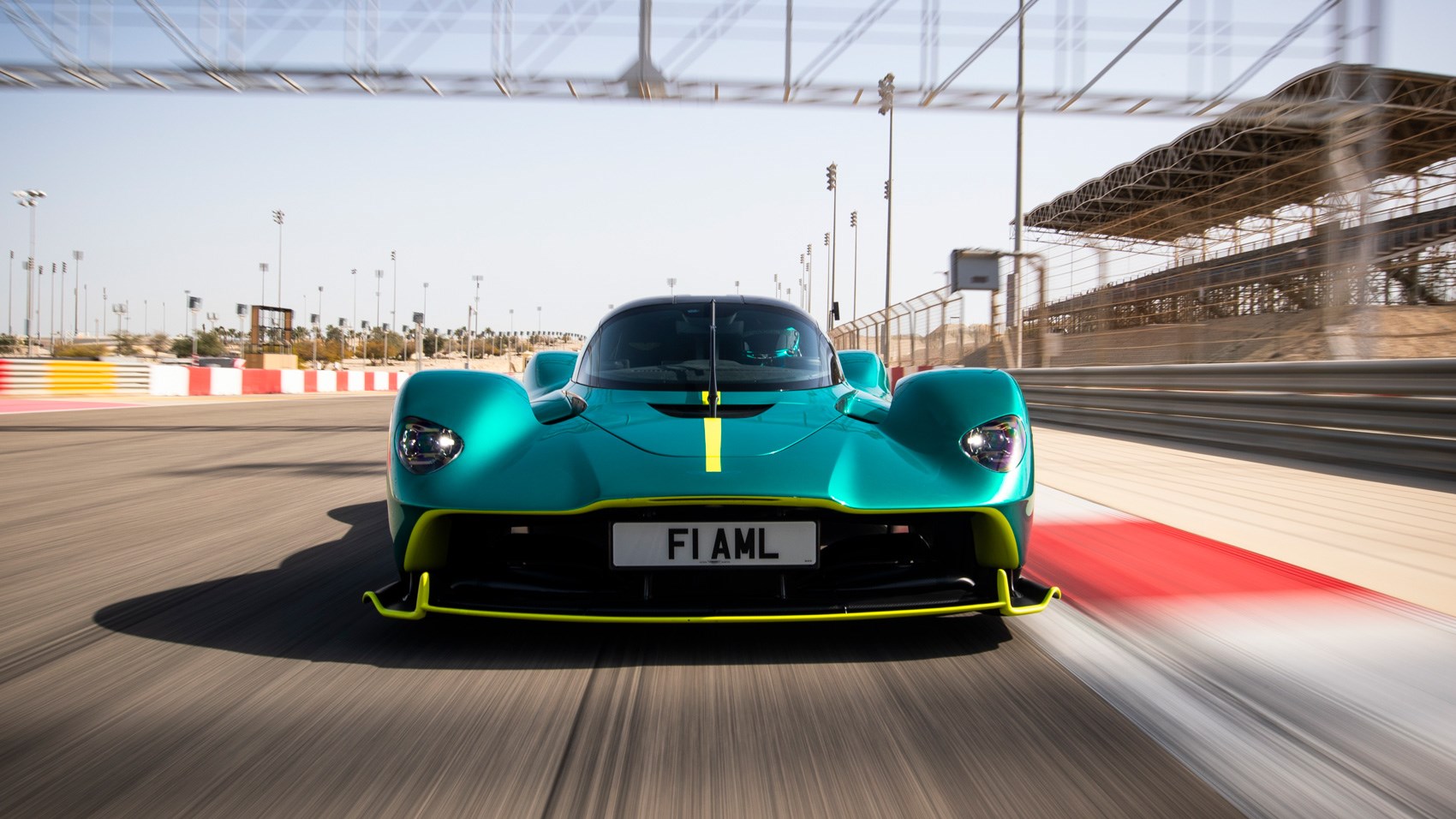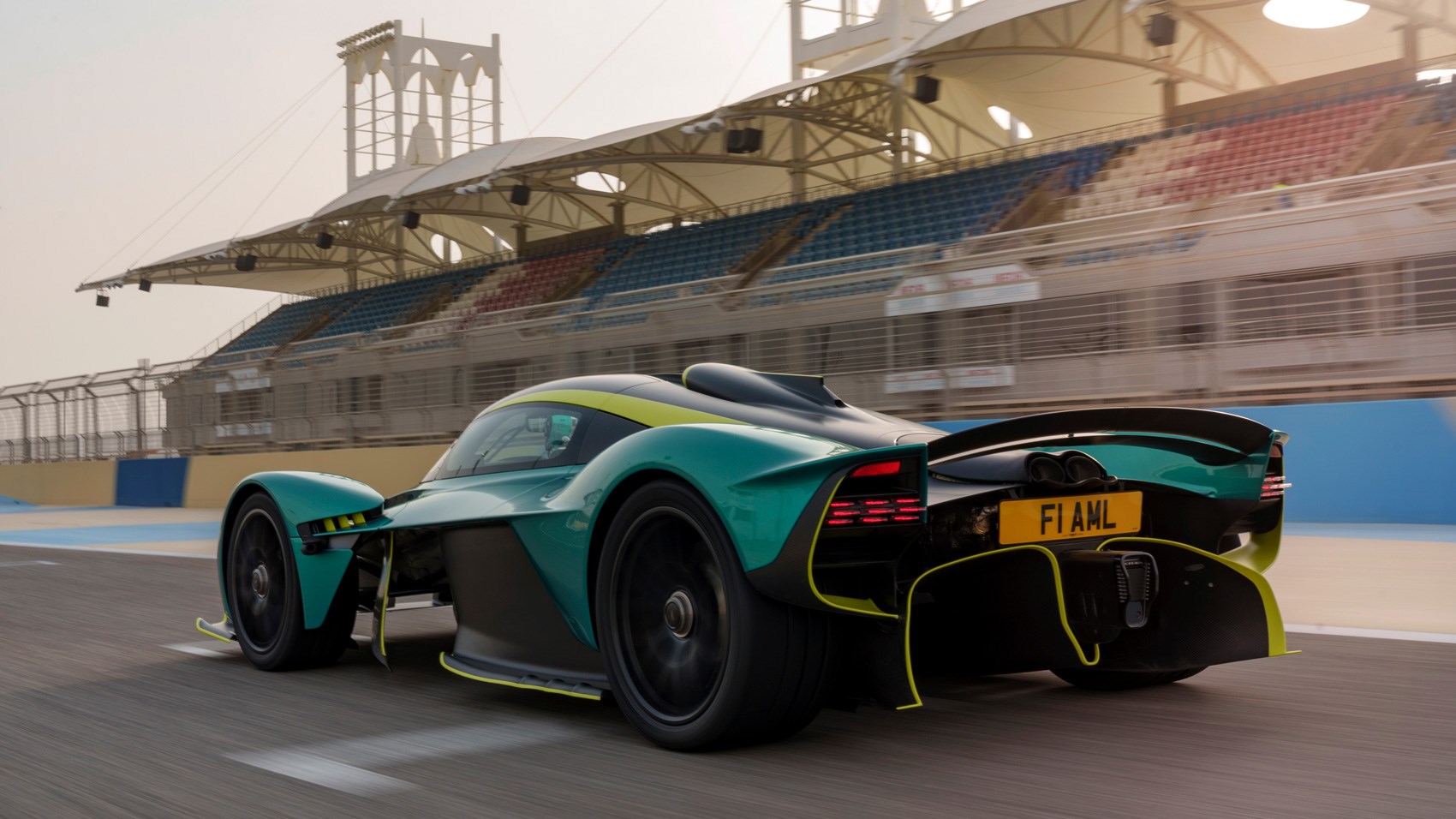► Finally! It’s time to drive Aston’s hypercar
► Valkyrie develops 1139bhp; can do 220mph
► Is it really an F1 car for the road?
‘In 20 years or so, people will look back on this car and say we were mad to build it. That’s why the Valkyrie is so amazing – because we did go out and we did build it.’ Aston Martin’s design director, Miles Nurnberger, isn’t joking with me, the company’s road-legal monster has come at huge cost. Today, however, is more a celebration of what can be achieved when a manufacturer takes an extreme view on car design and, eventually, delivers.
Formula One pre-season testing is just about to start at the Bahrain International Circuit before the opening 2023 championship grand prix itself. Appropriately, Aston has chosen the track in the sand dunes for the media’s first real opportunity to drive a car variously described as an F1 car for the road.
An old-school, shrieking V12 kinda F1 car, right?
Yes – that 6.5-litre V12 offers a head-spinning 11,100rpm and, mated to a Rimac-sourced hybrid system, produces 1,139bhp. But remember, this is a car you can take to a McDonald’s drive-thru – it even has full suspension lift for the speed bumps.
Stepping down and into the teardrop-shaped cockpit is like entering a lunar module – appropriate for a car loaded with space-age kit. The pivoting windscreen wiper for a curved screen was designed by a firm that worked on the space shuttle; Valkyrie is the first road car with 3D-printed parts in the headlights; each magnesium wheel weighs less than the tyre. Incredibly, Gaydon used so much lightweight titanium in the design that MOD bods actually called up to find out what it was used to build.

Configurator nirvana: CAR specifies its own Valkyrie
Valkyrie’s carbon-fibre exterior features an astonishing open underfloor that curves around the cockpit. Created by F1 guru Adrian Newey, when Aston Martin and Red Bull were still mates, duct channels feeding the rear diffuser are so large in some places that a couple of adults could easily squeeze inside. The resulting downforce of 1,100kg at 93mph is about to keep me in touch with Bahrain asphalt.

Safely harnessed in a reclined ‘feet-up’ position, I’m then presented with an F1-style steering wheel and talked through the switchgear, with special emphasis on one marked KERS. There’s little else to catch the eye – apart from two screens for the rear-view door cameras and a central display for sat nav.
Get it started!
There’s a start-up process rather than a single button and everything is loaded onto that oblong steering wheel. Eerily, the car rolls out of the garage using battery power, the V12 lump behind my head only firing up when I click the right paddle and engage second gear. I’m in a racing suit but wearing everyday shoes – heavy-footed, the Valkyrie immediately takes off on my three lap stint like a stabbed rat.

Aston’s F1 duo Lance Stroll and Fernando Alonso would expect their AMR23 car to approach the first corner in Bahrain at over 200mph. Cocooned in Valkyrie’s cockpit, my steering wheel read-out shows 187mph. Seems I’m travelling almost as fast, with the bonus of air conditioning – plus room for a terrified passenger. And a burger. I can even play my favourite dad rock using the bespoke Aston earplugs, less weight than in-car speakers.
Who’d have thought it’d be so easy?
Well, not quite. There’s no lazy ‘drive’ button – every change of the ‘old-school’ single clutch, seven-speed sequential ‘box is made via those paddle-shifters. A high-pitched, F1-style wail then ensues as I downshift through the gears in Track mode, the most bonkers of Valkyrie’s three settings. Handling is phenomenal. However, it’s the sheer shove-in-the-back power of the coupe exiting the first bend that startles the most.

The coupe is silly quick but unlike the two F1 cars I’ve driven, Valkyrie is also remarkably relaxed and easy to steer, with mid-engine balance and that epic helping of downforce to keep everything firmly planted. Even on tight corner, the Michelin Pilot Cups aren’t squealing in protest – I know I’m travelling at crazy speeds but maybe not trying hard enough.
Valkyrie’s F1-inspired suspension includes independent double wishbone, with compound torsion bar spring, active dampers and active ride height actuators. I’m still amazed there’s no bottoming out, even with a modest ground clearance of just 68mm.

Bahrain is notorious for being one of the most demanding tracks on the brakes. At F1 speeds, you want to know the Aston is going to pull up quick. Equipped with titanium brakes and carbon ceramic discs (420mm front, 385mm rear), plus an emergency assist system, the Aston inspires massive confidence, even at three-digit speeds.
Then it’s all over too quickly – premature exhilaration. Back in the pitlane, I climb up and out of the cockpit like an astronaut returning to Earth.
Aston Martin Valkyrie: verdict
The Valkyrie’s not enjoyed an easy ride to reach this point but I can now appreciate why it’s a proper game-changer. This is a car that pushes automotive design to the max and, just like the McLaren F1, 20 years down the road it will likely be spoken about in the same mythical terms. Aston Martin’s first hypercar delivers at every level. A road-going tour de force at a huge price.
